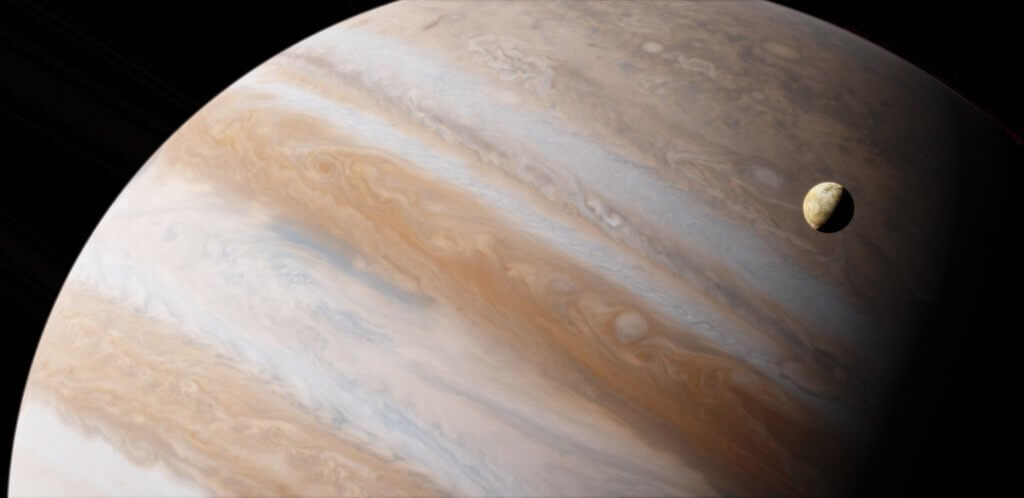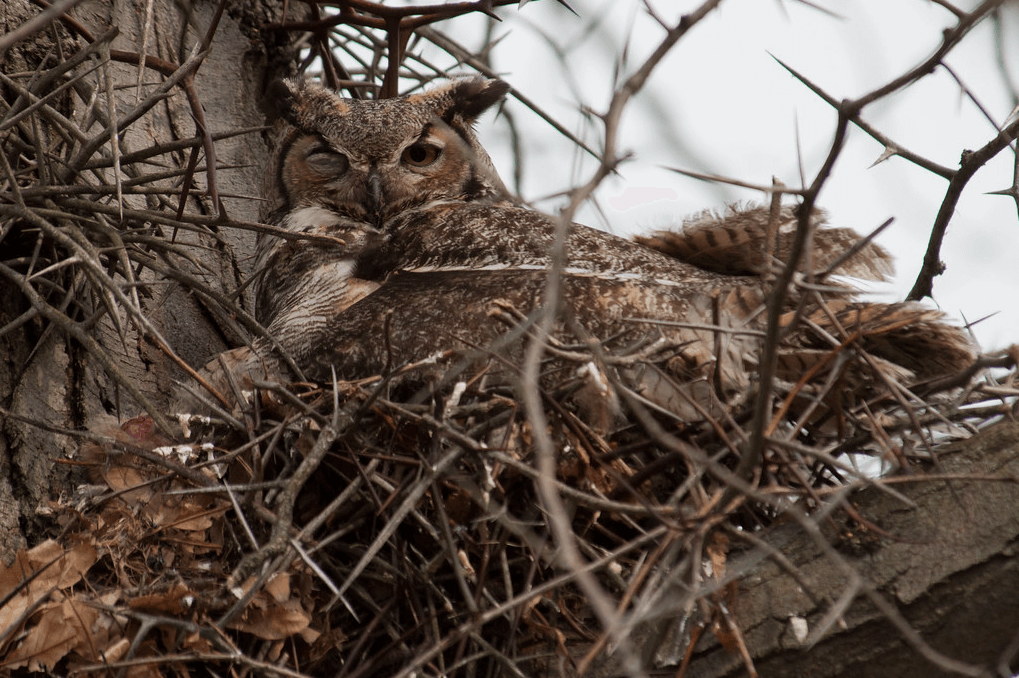With A Backyard Telescope, You Can Catch the Solar Eclipse – on Jupiter
by Dave Bixby
Broadcast 3.24 and 3.27.2020

Jupiter and one of it 79 moons, Io, whose shadow eclipsed the sun, September 2019. (photo: Pixabay)
Listen:
On a quiet, cloudless night, I begin planning for my adventure. Tonight I am going for a journey through nature. Although I will only take a few steps away from my back door, the places I visit will be giant leaps from our familiar surroundings.
Once out under the clear winter sky, I begin setting up the equipment to extend my vision far beyond my little yard. My focus shifts away from the concerns of the day.
I begin my journey by sitting back in a chair. I take a deep breath to slow my heart after a bit of heavy lifting. When the mist of my exhalation clears, I am greeted by a sea of stars above.
Tonight I plan to visit the planet Jupiter. First, however, I take a moment to greet some familiar friends in the sky.
In the west, the great square constellation of Pegasus – marked by four brightish stars – neighbors Andromeda, which shares an imaginary boundary with Perseus. A star chart shows that the constellations have been set apart and defined such that any point in the sky falls within one of 88 regions. But just like the astronaut who looks down from the window of her spacecraft and is moved by the lack of physical borders between the peoples and the lands of Earth, the sky, in reality, is just as undivided. The star groups of Perseus, Andromeda, and Pegasus flow one into the next, sharing a stretch of sky just as they share a mythical story.
Nearby, Venus gleams pure white. Venus truly is nearby compared to the stars. Venus is a familiar neighbor, and because the moon is not out tonight, it is the closest object in the cloud-free sky.
My eye is drawn across the firmament to the south, where a giant stands. People have said to me that stars seem brighter on winter nights, compared to the summer. There is a simple explanation. Stars visible to us in winter are brighter. Around and within the giant constellation of Orion is an assortment of the brightest stars we can ever see. The hunter’s dog, Canis Major, encompasses the very brightest star in the sky. Sirius shines like a diamond, but falls short of Venus’s searing splendor.
High to the right of Orion is my destination for the evening. Another giant, the planet Jupiter, glows near a tiny cluster of stars known as the Pleiades. Jupiter has many companions, 79 by last count, and through my field glasses, I should be able to see the four brightest. Galileo spotted these moons on a similar winter evening in 1609. They are called the Galilean moons in his honor. The fact that tonight I can only see three of them is the first hint that the anticipated event is indeed happening. I lower my binoculars and swing my home-built telescope toward radiant Jupiter.
As I get my first view through the eyepiece, I am met by a dazzling brightness. I am now looking not up but down onto the cloud tops of another world. My eye adjusts to the bright image and I begin to perceive the tan belts and gray wisps of the stormy Jovian atmosphere. Then I see it. It is what I had hoped to witness tonight, and it explains why only three of Galileo’s moons are visible. The fourth is still there in its perpetual orbit around the planet, but tonight I cannot see it directly. It is lost in Jupiter’s glare. Instead, I see indirect evidence of its existence: its shadow on the cloud tops. It looks like a tiny black spot, as if someone had pricked a hole in Jupiter with a pin. A hypothetical Jovian floating in Jupiter’s clouds at this location would be watching a solar eclipse. For the extraterrestrial observer on Jupiter, a day has turned to night.
As the minutes pass, the shadow of the moon called Ganymede drifts almost imperceptibly across the face of the giant planet. I sketch the scene and note a few details to preserve the event.
A car passes in the street and serves to underscore how few people are aware of the event I’ve just watched. Sitting back in the silence of the night, I feel a sense of privilege to have had a few minutes under a dark night sky to be reminded that we earthlings are a small part of something very large and full of events, scenes and consequences seldom pondered.
Every week since 1991, Field Notes has inquired about Montana’s natural history. Field Notes are written by naturalists, students, and listeners about the puzzle-tree bark, eagle talons, woolly aphids, and giant puffballs of Western, Central and Southwestern Montana and aired weekly on Montana Public Radio.
Click here to read and listen to more Field Notes. Field Notes is available as a podcast! Subscribe on iTunes, Google Play, or wherever you listen to podcasts.
Interested in writing a Field Note? Contact Allison De Jong, Field Notes editor, at adejong [at] montananaturalist [dot] org or 406.327.0405.
Want to learn more about our programs as well as fun natural history facts and seasonal phenology? Sign up for our e-newsletter! You can also become a member and get discounts on our programs as well as free reciprocal admission to 300+ science centers in North America!












